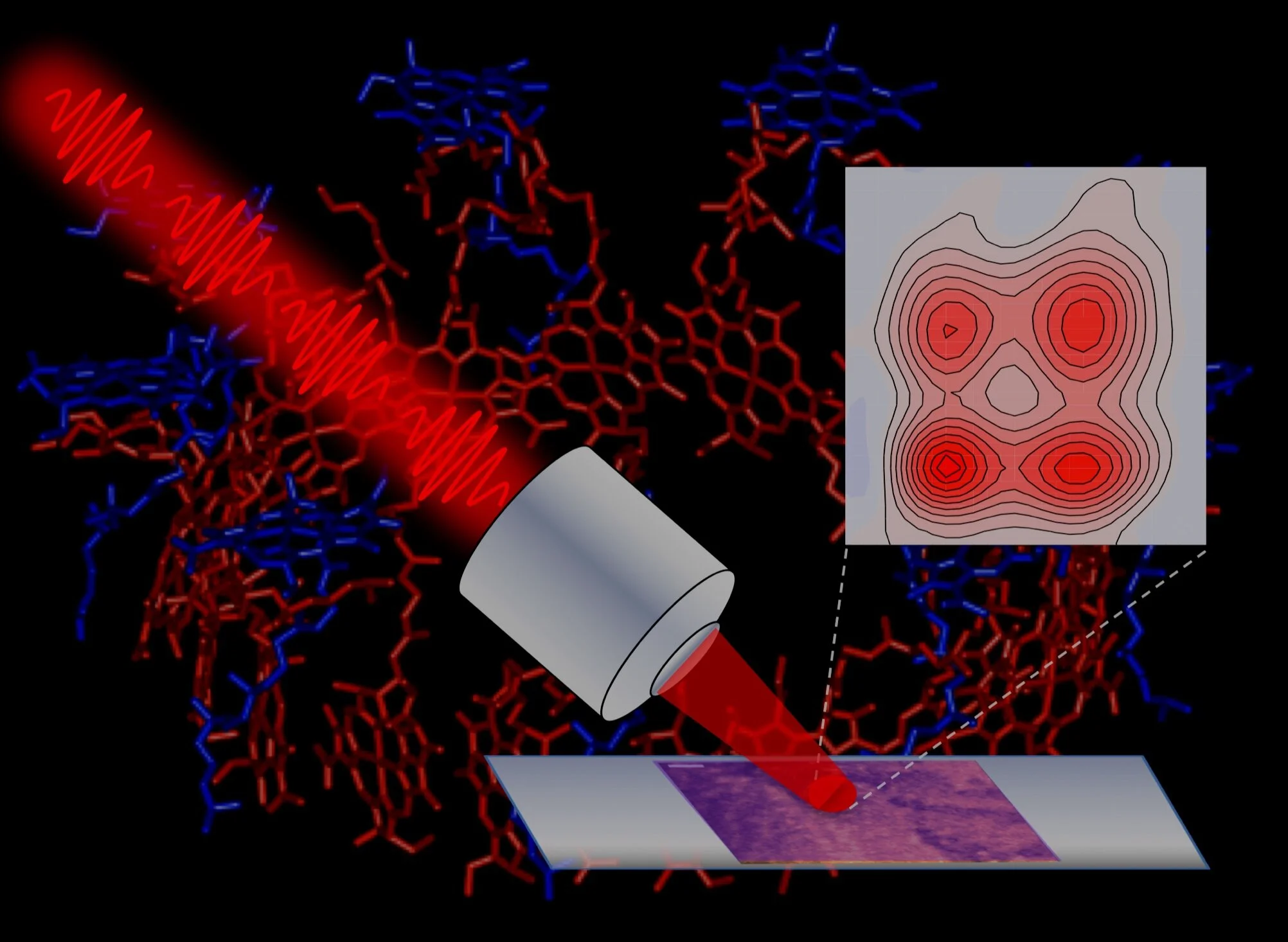Spatially-resolved Fluorescence-detected 2DES
Conventional implementations of 2DES typically spatially average over ~1010 chromophores spread over ~104 micron square area, limiting their ability to characterize spatially heterogeneous samples. We have developed fluorescence-detected 2DES, combining femtosecond time-resolution, sub-micron spatial resolution, and the sensitivity of fluorescence detection.
Multispectral Multidimensional Spectroscopy
We have developed a Multispectral Multidimensional Nonlinear Spectrometer (MMDS) to enable studies of dynamical processes in atomic, molecular, and material systems spanning femtoseconds to seconds, from the UV to the IR regimes. The MMDS employs pulse-shaping methods to provide an easy-to-use instrument with an unprecedented spectral range that enables unique combination spectroscopies. Read about our unique instrument here.
Various Experimental Implementations of 2D Spectroscopy
Over the years we have developed a variety of approaches to FT 2D spectroscopy, including easy-to-implement FT 2D spectroscopy approaches based on the use of the Dazzler pulse-shaper in the pump-probe geometry. Read about these and other commonly-used methods in our review on experimental implementations of 2D spectroscopy.
Phase-modulated Fluorescence-detected 2D Spectroscopy with Digital Lock-in Detection
We recently developed a digital lock-in-based approach to fluorescence-detected 2D spectroscopy that enables the simultaneous measurement of multiple linear and nonlinear spectroscopic signals in with high signal-to-noise-ratios in a matter of seconds. Read about our approach here.



